Dive into the extraordinary world of dogs bred to face the king of the jungle. Discover the awe-inspiring history and traits of breeds that stand against lions, and how their legacy shapes their roles today.
Uncover the stories, strategies, and the sheer bravery that define these canine warriors in our exploration of dogs that fight lions.
Key Takeaways:
- Dogs historically bred to confront lions, such as the Rhodesian Ridgeback and Turkish Kangal, possess unique traits like courage, strength, and agility, developed through selective breeding to protect communities and livestock from these predators.
- These breeds played a crucial role in traditional lion hunting, working in packs to track, corner, and hold lions, often as part of cultural ceremonies or rites of passage, symbolizing bravery and skill.
- Lion-fighting dog breeds require specialized training and management to harness their natural protective instincts, with a focus on establishing leadership, obedience, socialization, and managing their high prey drive.
- Breeds with lion-fighting heritage have specific health and care needs, including regular veterinary check-ups, tailored nutrition, and grooming practices to address common health issues and maintain their well-being.
- The modern roles of these dogs have shifted from lion hunting to protective and companionship roles, reflecting changes in ethical perspectives and animal welfare, with breed recognition and standards playing a key role in preserving the integrity of these breeds.
List of Dogs That Fight Lions
Certain dog breeds, like Rhodesian Ridgebacks and Turkish Kangals, were historically bred and trained to confront lions for community and livestock protection.
| Breed | Origin | Key Characteristics | Historical Role |
| Rhodesian Ridgeback | Southern Africa | Muscular build, agile, calm yet courageous temperament | Tracking and cornering lions with hunters |
| Turkish Kangal | Turkey | Formidable size, protective instincts | Guardians against predators, including lions |
| Dogo Argentino | Argentina | Power, intelligence, fearless nature | Big-game hunting, including pumas and wild boar |
| Boerboel | South Africa | Robust, muscular, confident and resilient | Farm protection against all threats, including lions |
| Tibetan Mastiff | Himalayas | Imposing size, protective nature | Protecting livestock from leopards and wolves |
| Cane Corso | Italy | Intelligence, agility, strength | War dog, property and livestock guardian |
Understanding the History of Dogs That Fight Lions
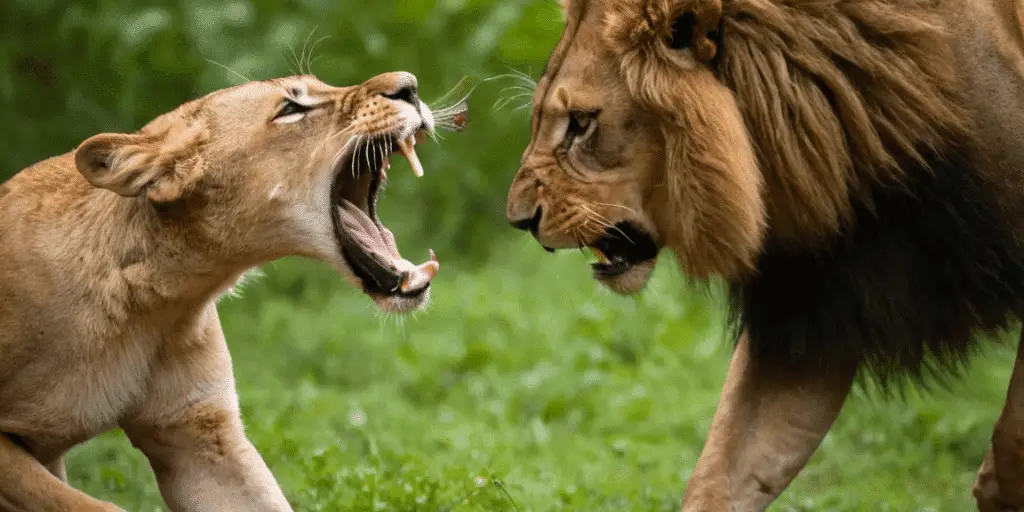
The relationship between dogs and lions is steeped in a rich tapestry of cultural history, with roots extending deep into the annals of time. In regions where lions roamed freely, such as parts of Africa and Asia, the necessity to protect communities and livestock led to the development of dog breeds with the courage and strength to confront these formidable predators.
The cultural significance of these dogs is profound, often symbolizing the bravery and resilience of the people who raised them.
Selecting and training a dog for the daunting task of facing a lion required meticulous care. Historical figures involved in breeding these dogs were revered for their deep understanding of canine behavior and genetics. They sought specific traits: agility, tenacity, and an imposing presence.
The training methods were rigorous, ensuring that these dogs could not only survive an encounter with a lion but also work alongside hunters to track and corner the big cats.
Origins of Lion-Fighting Dog Breeds
Each lion-fighting dog breed has a unique origin story, often tied to the geographical and historical context of their development. For instance, the Rhodesian Ridgeback, originally bred in Southern Africa, is renowned for its lion-hunting prowess. Its ancestors were semi-domesticated hunting dogs of the Khoikhoi people, which were crossed with European breeds to enhance their hunting capabilities.
Similarly, other breeds like the Anatolian Shepherd hail from the rugged landscapes of Turkey. These dogs were not only guardians of flocks but also protectors against predators, including lions that once roamed the region.
Ancient practices and selective breeding programs played a crucial role in honing the instincts and physical attributes of these dogs, enabling them to stand their ground against one of nature’s most powerful carnivores.
Historical Roles and Uses in Lion Hunting
In the realm of lion hunting, these dogs were more than mere companions; they were integral to the survival and success of the hunt.
Employing strategic maneuvers, these canines would work in packs to flank and harass a lion, providing hunters the opportunity to deliver a decisive blow. Their roles were multifaceted, from tracking the scent of a lion to baiting and holding the attention of the beast.
Notable historical hunts often featured these dogs, and their involvement was sometimes part of traditional ceremonies or rites of passage for young warriors. The act of confronting a lion with the aid of these brave dogs was seen as the ultimate test of courage and skill. It was a practice that bonded men and dogs in a dance of primal instincts and mutual respect.
The legacy of these dogs is not merely a footnote in history but a living narrative that continues to fascinate and inspire. As we delve deeper into the stories of these remarkable breeds, we gain a greater appreciation for their role in shaping human and canine history.
Breeds Known for Their Ability to Confront Lions
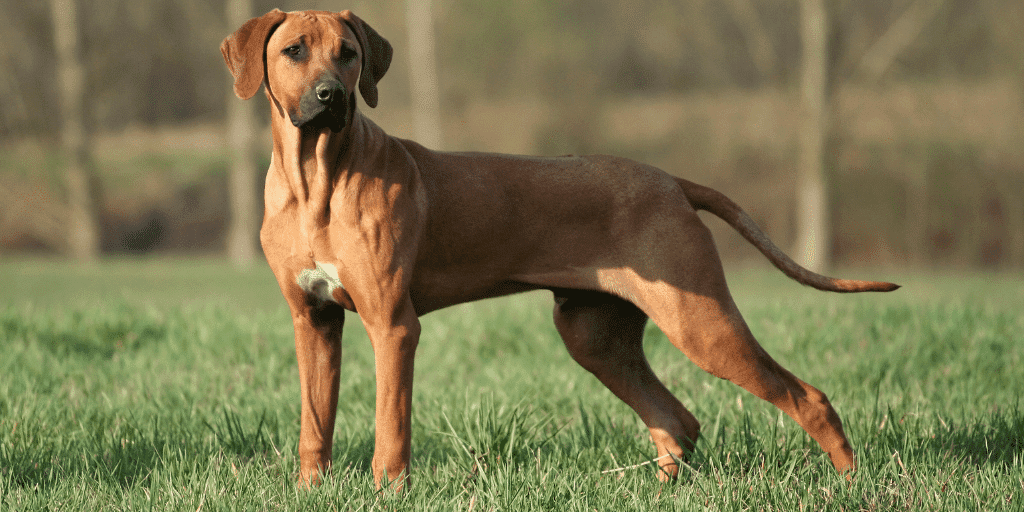
When we think of dogs, we often picture loyal companions, playful pals, or diligent workers. However, some breeds have a history that intertwines with the fierce and majestic lion. These dogs are not your average pet; they are powerhouses with a heritage of standing toe-to-toe with one of nature’s most formidable predators. Let’s delve into the characteristics and historical significance of these brave breeds.
Rhodesian Ridgeback: The African Lion Hound
The Rhodesian Ridgeback is synonymous with lion hunting in Africa. This breed’s ancestors were bred by the Khoikhoi people but later refined by European settlers in Southern Africa to track and corner lions.
Known for the distinctive ridge of hair running down its back, the Ridgeback is a muscular and agile dog, with a calm yet courageous temperament. Historical accounts praise the Ridgeback’s bravery, recounting instances where these dogs fearlessly held lions at bay until hunters could catch up.
Turkish Kangal: The Flock Guardian
The Turkish Kangal is a breed that commands respect. Originating from the Sivas region of Turkey, these dogs are revered for their strength and protective instincts.
As flock guardians, their primary role was to defend sheep from predators, including wolves and even lions. The Kangal’s formidable size and alert demeanor make it an effective deterrent against any threat. In Turkey, this breed is not just a dog; it’s a cherished part of the cultural fabric.
Dogo Argentino: The Big-Game Hunter
Hailing from Argentina, the Dogo Argentino was developed for the sole purpose of big-game hunting. This includes tracking and subduing wild boar and pumas. The Dogo’s power, intelligence, and fearless nature have equipped it well for encounters with lions.
However, due to its hunting prowess, the breed faces legal restrictions in some countries. The Dogo Argentino is a testament to the capabilities of selective breeding in producing a dog that can confront some of the most dangerous predators.
Boerboel: The South African Farm Protector
The Boerboel is a breed that has been the cornerstone of farm protection in South Africa. These dogs are known for their ability to guard homes and livestock against all threats, including lions.
With a robust and muscular build, combined with a confident and resilient nature, Boerboels are more than capable of standing their ground. Their presence on a farm is a powerful deterrent to any would-be predator.
Tibetan Mastiff: The Himalayan Sentinel
In the Himalayan mountains, the Tibetan Mastiff stands as a guardian against the wild. This breed’s imposing size and deep bark have been used for centuries to protect livestock from predators, including leopards and wolves. While encounters with lions are not part of their traditional role, the Tibetan Mastiff’s protective nature and physical attributes suggest they would be formidable opponents.
Cane Corso: The Roman War Dog
The Cane Corso has a lineage that dates back to Roman times, where it served as a war dog. Over the centuries, this breed has evolved into a versatile protector, capable of guarding property and fending off large predators. The Cane Corso’s intelligence, agility, and strength make it well-suited for such confrontations, embodying the traits of a fearless guardian.
Other Notable Breeds with Lion-Fighting Heritage
While the aforementioned breeds are some of the most recognized for their lion-fighting heritage, there are others with lesser-known histories. These include:
- The Bully Kutta, often used in Pakistan and India for guarding and hunting purposes.
- The Anatolian Shepherd, a Turkish breed similar to the Kangal, known for its protective instincts.
- The Neapolitan Mastiff, an Italian breed with a history of use in battle and guarding.
Each of these breeds brings unique characteristics and historical accounts that contribute to their reputation as dogs capable of confronting lions. Their stories are woven into the tapestry of human-canine collaboration, showcasing the remarkable bravery and resilience of these extraordinary dogs.
Physical and Behavioral Traits of Lion-Fighting Dogs
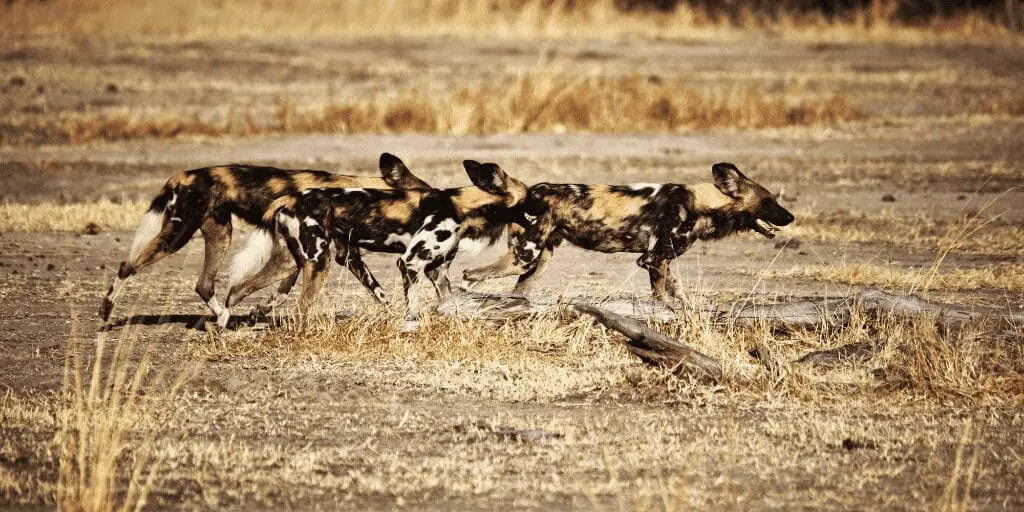
When it comes to dogs that have the mettle to stand up to lions, certain physical and behavioral traits are non-negotiable. These canines are not just any regular dogs; they are a special breed, quite literally.
Their bodies and minds have been shaped by selective breeding to create the ultimate protector against one of nature’s most formidable predators. Let’s explore what makes these dogs so unique and capable.
Size and Strength: Key Factors in Lion Confrontations
In the face of a lion, size and strength are vital. These dogs are built like tanks, with muscle mass and bone structure that provide them with the physical advantage necessary to confront a lion. For instance:
- The Boerboel can weigh up to 200 pounds, with a build that’s all about power and mass.
- The Turkish Kangal stands tall with an imposing stature, often weighing over 140 pounds, equipped with a bite force that’s one of the strongest among canines.
These breed measurements are not just numbers; they are a testament to the dogs’ ability to hold their ground against a predator known for its own strength and power.
Temperament: Courage and Fearlessness
It’s not all about the physical build, though. The temperament of these dogs is equally important. Courage and fearlessness are ingrained in their psyche, allowing them to remain calm under pressure.
This is not something that happens by chance; it’s a trait that is assessed and cultivated through careful breeding and training. For a dog to confront a lion, it must possess:
- An innate bravery that doesn’t waver in the face of danger
- A composed demeanor that allows it to assess and react to threats effectively
These dogs are not reckless; they are calculated in their courage, which is what makes them so effective.
Endurance and Agility in Harsh Environments
The environments where these dogs operate can be unforgiving. Endurance and agility are critical for navigating the rough terrains where lions are found.
These breeds have adapted to withstand extreme conditions, from the scorching heat of the African savannas to the rugged landscapes of the Himalayas. Their bodies are designed to endure, while their agility ensures they can move quickly and efficiently when it matters most. Consider the following:
- The Rhodesian Ridgeback has a sleek frame that allows for swift, enduring chases in the heat of the African bush.
- The Tibetan Mastiff possesses a thick coat and a robust body suited to the cold, mountainous regions of the Himalayas.
These adaptations are not just for survival; they are for the pursuit, engagement, and sometimes confrontation with one of the most dangerous predators on the planet.
The dogs that fight lions are a breed apart, both literally and figuratively. Their physical traits and behavioral characteristics are the result of generations of selective breeding, aimed at creating a canine capable of standing up to the king of beasts. It’s a remarkable blend of nature and nurture, resulting in a dog that’s as impressive in stature as it is in spirit.
Training and Managing Dogs with Lion-Fighting Instincts
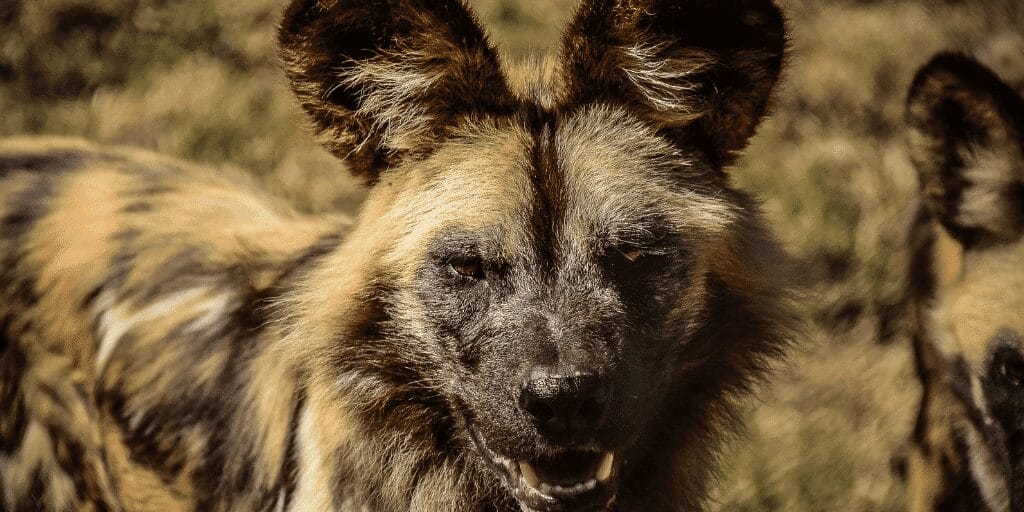
Dogs bred for their lion-fighting capabilities require a unique approach to training and management. These powerful breeds come with a set of instincts that are both impressive and challenging.
Responsible ownership is paramount, as is understanding the nuances of training such specialized animals. Consistent, firm, and fair handling is the cornerstone of managing these dogs, ensuring they become well-adjusted and reliable companions.
Establishing Leadership and Obedience
When it comes to training lion-fighting breeds, establishing clear leadership is crucial. These dogs need to understand that their human is in charge, which fosters a relationship based on respect and compliance. Training techniques should be designed to:
- Build trust between the dog and the owner
- Encourage obedience while preserving the dog’s natural protective instincts
- Avoid breaking the dog’s spirit or suppressing its innate abilities
The goal is to guide the dog’s behavior appropriately while allowing it to retain the essence of what makes it such a formidable protector.
Socialization and Managing Prey Drive
Given their high prey drive, socialization is key in ensuring these breeds can distinguish between a genuine threat and a non-threat. Proper socialization involves:
- Introducing the dog to a variety of environments and situations
- Allowing controlled interactions with other animals
- Teaching the dog to remain calm and focused despite distractions
These strategies help mitigate potential risks and ensure the dog behaves predictably in various scenarios.
Exercise Requirements: Keeping a Balanced Lifestyle
The exercise needs of lion-fighting dog breeds are significant. Physical activity is not just about keeping them fit; it’s also about maintaining their mental well-being. A balanced lifestyle for these dogs includes:
- Regular exercise to channel their energy positively
- Mental stimulation through training and play
- Sufficient rest to recover from physical exertion
Owners should provide a structured routine that caters to their dog’s needs, ensuring they remain both physically healthy and mentally sharp.
Health and Care for Lion-Fighting Dog Breeds
Caring for breeds that have historically confronted lions involves more than just meeting their basic needs. These dogs often have specific health concerns and care requirements that are essential to address.
Preventative measures are key to avoiding common health issues, and regular veterinary check-ups are crucial to ensure these dogs enjoy a high quality of life.
Common Health Issues and Lifespan
Lion-fighting dog breeds, like all dogs, can be prone to certain health issues, some of which may be hereditary or breed-specific. It’s important to be aware of these potential ailments to provide the best care possible. Common health concerns include:
- Hip dysplasia, particularly in larger breeds like the Boerboel or Turkish Kangal.
- Gastric torsion, also known as bloat, which can be a risk for deep-chested breeds.
- Dermatitis or skin conditions, especially in breeds with wrinkles or folds.
The average lifespan of these breeds varies but providing proper care can help promote health and longevity. For example, the Rhodesian Ridgeback typically lives between 10 to 12 years, while the Dogo Argentino may live 9 to 15 years. Regular exercise, a healthy diet, and preventative care are all part of ensuring these dogs live full and happy lives.
Nutritional Needs for Optimal Health
The nutritional needs of lion-fighting dog breeds must be tailored to their size, activity level, and health considerations. A balanced diet is crucial for maintaining their strength and vitality. Here are some tips for feeding these powerful breeds:
- Choose high-quality dog food that meets the nutritional standards for their specific size and energy requirements.
- Consider breed-specific health issues when selecting food, such as formulas that support joint health for breeds prone to hip dysplasia.
- Supplements like glucosamine can be beneficial for maintaining joint health, especially in larger breeds.
Proper nutrition is the cornerstone of a dog’s overall health, and it’s especially important for breeds that carry the physical and genetic legacy of confronting lions.
Grooming and Maintenance
Grooming and maintenance are essential aspects of caring for lion-fighting dog breeds. These routines not only keep the dogs looking their best but also play a significant role in their overall health. Key grooming practices include:
- Regular brushing to maintain coat health, particularly for breeds with dense or long fur like the Tibetan Mastiff.
- Nail trimming to prevent discomfort and mobility issues.
- Dental hygiene practices, such as brushing teeth or providing dental chews, to prevent periodontal disease.
Each breed may have its own specific grooming needs, so it’s important to understand the best practices for your dog’s coat type and overall care requirements. Regular grooming sessions are also a great opportunity to bond with your dog and check for any signs of health issues.
Caring for a dog with a history of lion-fighting is a significant responsibility. These breeds require dedicated attention to their health, nutrition, and grooming to ensure they remain fit, healthy, and ready to face any challenge—though, in a modern context, that’s more likely to be a spirited play session than an actual lion confrontation.
Ethical Considerations and Modern Roles

The use of dogs in confrontations with lions is a practice that raises significant ethical questions. As society progresses, the roles of these breeds have evolved, with a greater emphasis on protection, companionship, and non-hunting roles.
This evolution reflects a broader understanding of animal welfare and the responsibilities we have towards these loyal companions.
The Shift from Lion Hunting to Protective Roles
Historically, dogs bred for lion fighting were valued for their hunting prowess. However, as the need for hunting lions has diminished, these breeds have found new purpose.
Their natural instincts, once used for tracking and confronting lions, are now channeled into more positive behaviors. These dogs serve society in various ways:
- As protectors of homes and livestock, their presence alone can deter potential threats.
- In companionship, they offer loyalty and affection to their families.
- Through service work, including search and rescue operations, where their skills are invaluable.
This transition benefits not only the dogs, who are given roles that ensure their well-being, but also the communities they serve.
Legal and Moral Implications of Breeding for Aggression
Breeding dogs for aggression, particularly towards lions or other large predators, is fraught with legal and moral challenges. It’s crucial to consider the implications of enhancing traits that could pose risks to both the animals and the public. The responsibility lies with:
- Breeders, to ensure they are not perpetuating aggressive tendencies unnecessarily.
- Owners, to provide proper training and socialization to mitigate aggressive behaviors.
- Societies, to enact and enforce regulations that protect the welfare of these animals and the safety of the public.
It’s essential to strike a balance between respecting the historical significance of these breeds and ensuring their roles in modern society are ethical and appropriate.
By doing so, we honor the legacy of these dogs while safeguarding their future and the communities they live in.
Breed Recognition and Standards
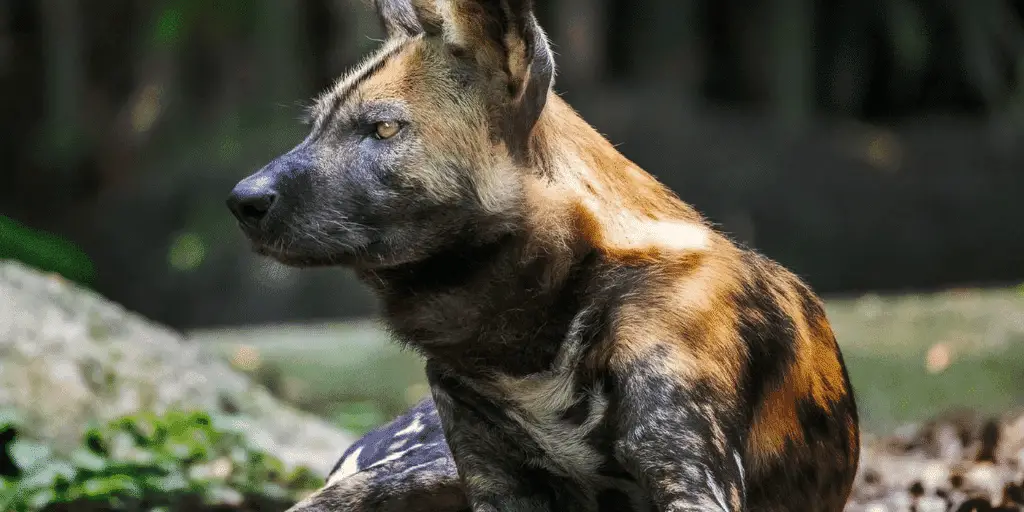
The recognition and classification of lion-fighting dog breeds by major kennel clubs and breed organizations play a pivotal role in preserving the integrity and health of these breeds.
Breed standards serve as a blueprint for breeders and enthusiasts, ensuring that the physical and temperamental qualities that define these breeds are maintained over generations.
American Kennel Club (AKC) and United Kennel Club (UKC) Classifications
In the United States, the American Kennel Club (AKC) and the United Kennel Club (UKC) are two of the most influential organizations when it comes to breed recognition and standards. Breeds with a history of confronting lions, such as the Rhodesian Ridgeback, are classified within specific groups based on their characteristics and abilities. For example:
- The AKC places the Rhodesian Ridgeback in the Hound Group, recognizing its history as a hunter.
- The UKC classifies the same breed within the Sighthound & Pariah Group, highlighting its speed and hunting instincts.
These classifications influence various aspects of canine affairs, including:
- Breeding practices: Breeders aim to adhere to these standards to produce dogs that are true to the breed’s heritage.
- Dog shows: Standards set by the AKC and UKC are used to judge dogs in competitions, impacting their success and desirability.
- Perception: How these breeds are classified can affect public perception and understanding of the breed’s purpose and nature.
International Recognition and Breed Standards
Globally, lion-fighting dog breeds are recognized and classified by a variety of international breed organizations, each with its own set of standards and classifications. These standards have a significant impact on breeding and ownership across the world. For instance:
- The Fédération Cynologique Internationale (FCI), an international canine organization, recognizes and classifies breeds like the Dogo Argentino and the Boerboel, setting standards that are used by many countries.
- Breed-specific clubs around the world work to maintain the breed standards by providing resources and guidelines for breeding and care.
The global impact of these standards includes:
- Breeding standards: International standards help to unify breeding practices across different countries, promoting the health and integrity of the breeds.
- Ownership considerations: Potential owners can make informed decisions based on the recognized standards, understanding the care and environment that these breeds require.
Breed recognition and standards are essential for the continuation of the unique qualities that define lion-fighting dog breeds. By adhering to these guidelines, breeders and owners can ensure that these dogs not only meet the physical and temperamental expectations but also maintain the health and essence of the breed for future generations.








